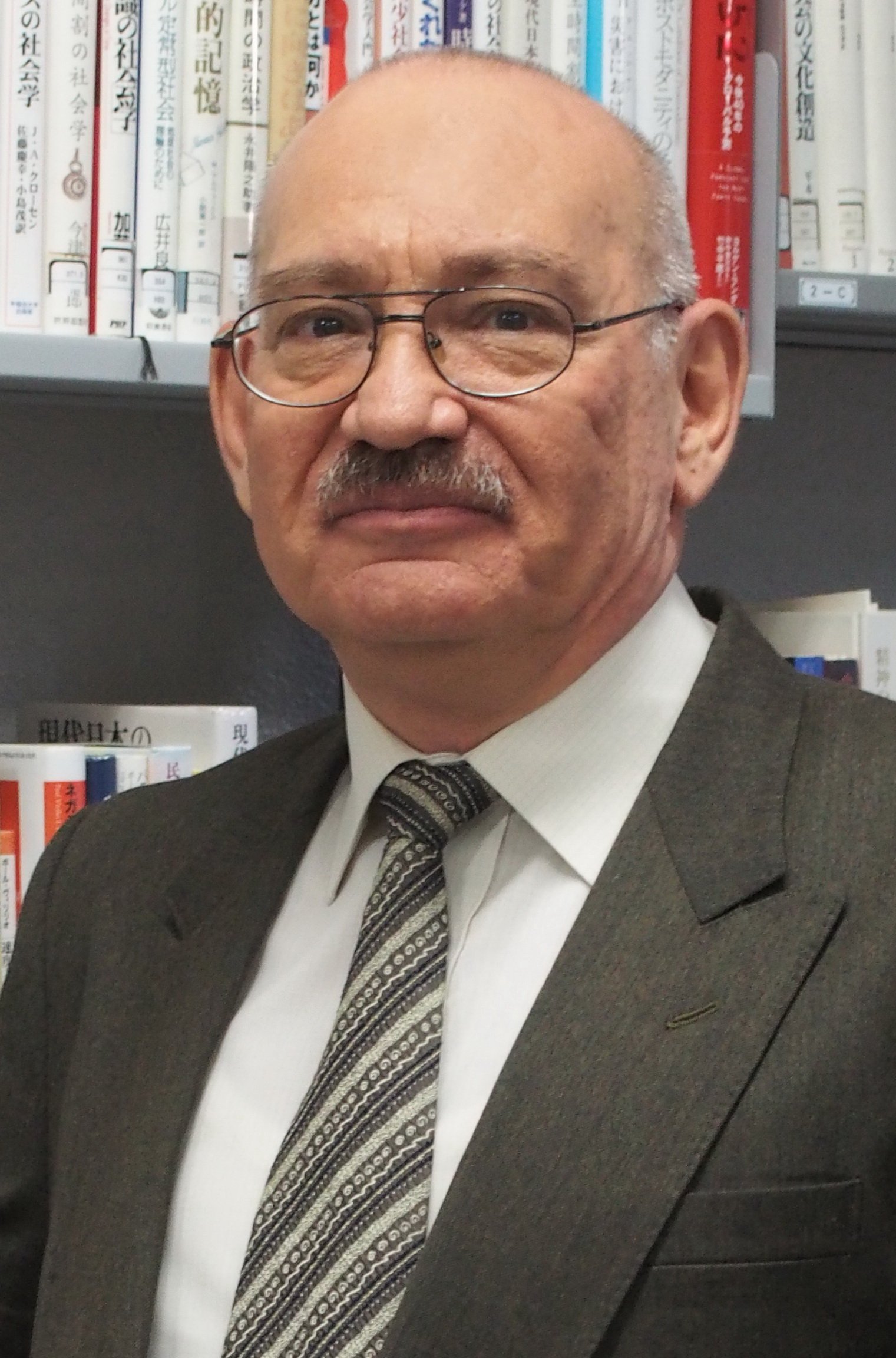Dedication to Professor Michael Tribelsky: 50 Years in Physics
A special issue of Physics (ISSN 2624-8174). This special issue belongs to the section "Statistical Physics and Nonlinear Phenomena".
Deadline for manuscript submissions: closed (1 July 2021) | Viewed by 29769
Special Issue Editors
Interests: nanophotoncis; nonlinear optics; optoelectronics; light-matter interaction; fano resonances
Special Issues, Collections and Topics in MDPI journals
Interests: optical solitons and optical communications; dynamics of long josephson junctions; nonlinear dynamical lattices; pattern formation in one- and two-dimensional homogeneous and inhomogeneous nonlinear dissipative media perturbation theory and variational methods; ginzburg-landau equations
Special Issues, Collections and Topics in MDPI journals
Interests: light scattering; wave propagation; plasmonics
Special Issues, Collections and Topics in MDPI journals
Special Issue Information
Dear Colleagues,

Michael Tribelsky graduated from the Lomonosov Moscow State University, USSR in 1973, defended his Ph.D. thesis at the Moscow Institute of Physics and Technologies in 1976, and got the Second Doctorate (habilitation, known as “Doctor of Physical-Mathematical Sciences”) from the Landau Institute for Theoretical Physics in 1983. In 1979, at the age of 28, for his outstanding achievements in the study of optical damage of glass he received the highest USSR national prize for junior scientists: Lenin Komsomol Prize in Science and Technologies.
His first scientific paper (where he was a single author) was published in 1971 when he still was a student. The paper is devoted to the Gunn effect in semiconductors. It is worth mentioning that in this paper he developed an original approximate method to solve the Schrödinger equation in the vicinity of the ground state in a complicated potential (the limit opposite to the WKB). Since that Prof. Tribelsky has made numerous fundamental contributions to an extremely broad area of physics and mathematics, including (but not limited to) quantum solid-state physics, various problems of light-matter interaction, liquid crystals, physical hydrodynamics, nonlinear waves, pattern formation in nonequilibrium systems and transition to chaos, bifurcation and probability theory, and even prediction of the dynamics of actual market prices. In particular, he has published the fundamental papers, which include the following results:
- The pioneering detailed study of the structure and stability of domain walls between various nonequilibrium (dissipative) structures, such as grains of roll with different orientations in Rayleigh–Bénard–Marangoni convection.
- The prediction of a new type of stable dissipative structures with quasicrystal symmetry and determination of the criteria for their stability.
- The discovery of the drift bifurcation transforming a steady dissipative pattern into a traveling wave.
- The formulation of an approach for determining the height of the barrier separating various locally stable solutions of the Ginzburg–Landau equation in the corresponding functional space and calculating this barrier in the explicit form. This made it possible to determine the "stability margin" of the corresponding solutions for finite-amplitude perturbations.
- A simple topological explanation of the nature of the violation of weak conservation laws, which led to a "slip" of the phase of the complex order parameter, when its modulus vanishes. The prediction of the universality of the dynamics of the order parameter in the vicinity of the phase-slip-points.
- In collaboration with I.М. Lifshitz, the formulation and solution of the problem of the propagation of nonlinear elastic waves in metals near the point of the electron-topological phase transition, required the derivation of the nonlinear quantum elasticity theory equations.
- The prediction of a new and very unusual type of transition to turbulence analogous to the second-order phase transitions, when the turbulent state smoothly detaches directly from the rest state of a fluid (observed experimentally in the electroconvection of liquid crystals).
In the course of his work on light-matter interactions, Prof. Tribelsky’s contribution to the optical breakdown of glass acquired special importance as well as his explanation of the deep laser melting of metals made shortly after the experimental discovery of the effect. Another noteworthy direction of his study is represented by the work on the optical-thermodynamic phenomena in liquids, where a light beam is used as a tool to transfer liquid to a given point of the phase diagram. Finally, it is relevant to mention the pioneering research of Prof. Tribelsky on the dynamics of thermochemical instability in polymers. In his recent work, he has focused on fundamentals of the resonant light scattering by subwavelength particles and made a significant contribution to the understanding of physics of the Fano resonances, anomalous scattering, and absorption, as well as excitation of longitudinal modes in the subwavelength particles made of materials with spatial dispersion. Last but not least should be mentioned his most recent results devoted to the dynamic resonant scattering, opening a door to a new subfield in subwavelength optics.
We would like to stress that all his important (and often counterintuitive) theoretical predictions have found solid experimental evidence. Most of these results remain highly relevant to the current research in this vast area.
Professor Tribelsky's accomplishments are highly appreciated by the international community. The best indications of that are the high citation rates of his publications and numerous awards and titles he has received. In particular, in addition to the mentioned Lenin Komsomol Prize, many times he received the Max Planck Society Fellowship, to carry out research in Germany; the JSPS Fellowship for Senior Scientists, to carry out research in Japan, Center of Excellency Professorship from the University of Tokyo and Kyushu University, Japan; Honorary Doctor of Philosophy from the Yamaguchi University, Japan; and numerous invitations for Visiting Professorships from the best Universities all around the world.
We congratulate Michael on his double anniversary and wish him to have many happy, fruitful years ahead, new fundamental discoveries, and talented disciples. We believe this Special Issue constitutes a timely celebration of our respected scholar, researcher, and friend. Furthermore, we hope that the Special Issue inspires scholars, especially junior researchers, to continue the advancement in physics.
Prof. Dr. Andrey Miroshnichenko
Prof. Dr. Boris Malomed
Prof. Dr. Fernando Moreno
Guest Editors
Manuscript Submission Information
Manuscripts should be submitted online at www.mdpi.com by registering and logging in to this website. Once you are registered, click here to go to the submission form. Manuscripts can be submitted until the deadline. All submissions that pass pre-check are peer-reviewed. Accepted papers will be published continuously in the journal (as soon as accepted) and will be listed together on the special issue website. Research articles, review articles as well as short communications are invited. For planned papers, a title and short abstract (about 100 words) can be sent to the Editorial Office for announcement on this website.
Submitted manuscripts should not have been published previously, nor be under consideration for publication elsewhere (except conference proceedings papers). All manuscripts are thoroughly refereed through a single-blind peer-review process. A guide for authors and other relevant information for submission of manuscripts is available on the Instructions for Authors page. Physics is an international peer-reviewed open access quarterly journal published by MDPI.
Please visit the Instructions for Authors page before submitting a manuscript. The Article Processing Charge (APC) for publication in this open access journal is 1400 CHF (Swiss Francs). Submitted papers should be well formatted and use good English. Authors may use MDPI's English editing service prior to publication or during author revisions.








